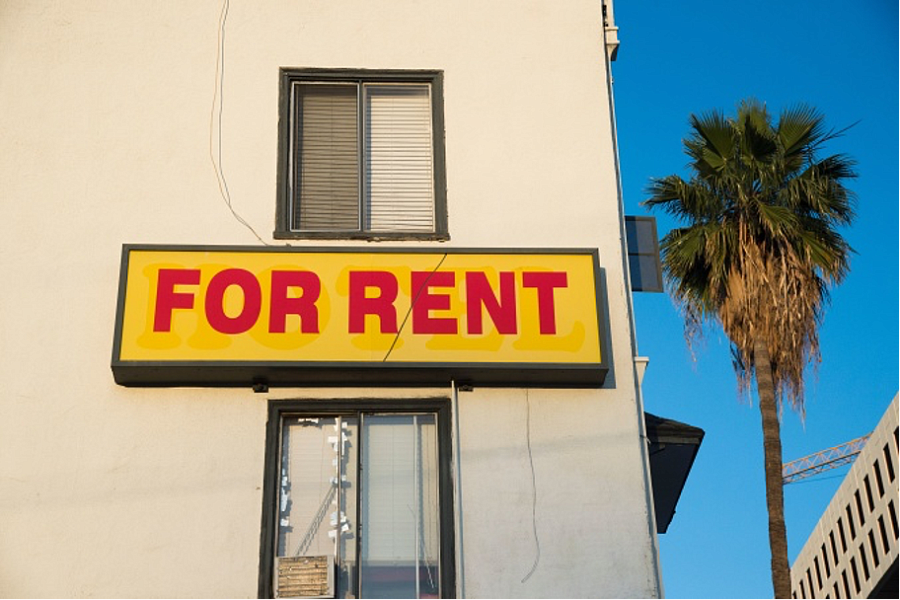Officials tell LA residents to stay home during pandemic — but many homes are substandard

A “For Rent” sign is seen on a building Hollywood, California.
(Photo: Robyn Beck/AFP/Getty Images)
Early in the coronavirus pandemic, Los Angeles officials called on residents to limit the spread of COVID-19 by staying in their residences as much as possible. In November, with cases spiking again, they issued another order limiting gatherings among people from different households. Officials gave a name to the stay-at-home orders: “Safer at Home.”
But for many L.A. residents, home itself might not be very safe. And according to city rules, it might not be a permissible home at all.
Earlier this year, I obtained the city’s citations for unapproved dwelling units going back to 2015 through a California Public Records Act request. My request from the city’s Housing and Community Investment Department (HCID) returned about 80,000 pages of documents. These records include information such as the addresses of unapproved units, the owners of the properties, and details on why the units were being cited.
California’s high housing costs and severe housing shortage have led many renters to settle for makeshift homes in garages, illegally subdivided apartments and accessory dwelling units that may not be up to the city’s safety codes. The city sends out inspectors to cite these units, sometimes ordering tenants to leave and find another place to live in a tight rental market.
Some landlords complain that the city is too aggressive about citing unapproved dwelling units. They say they’re often unaware that parts of their property aren’t in compliance with city rules, and that they’re not given a reasonable chance to bring the unit into compliance.
In 2017, the city created a program meant to streamline the process of bringing unapproved units up to code. But this Unpermitted Dwelling Unit (UDU) Ordinance has had mixed results, bringing just 502 units into compliance as of early 2020.
Tenants can get caught in the middle. These sub-standard or unlawful units may be the only housing they can afford in a city as expensive as L.A. What happens when they are ordered to leave?
With homelessness rates skyrocketing in the city, are some tenants facing a choice of living in substandard housing or living on the streets? How does living in one of these units affect a tenant’s health, especially during a pandemic that has increasingly confined people to their homes? How has enforcement from the city evolved over time? What neighborhoods are hotspots for enforcement. How are landlords responding to city enforcement?
These are the kinds of questions I’m hoping to answer with a deep dive into these citations. I’m looking forward to learning more about how to analyze these records through the 2020 Data Fellowship, during a time when home is so crucial to health.

